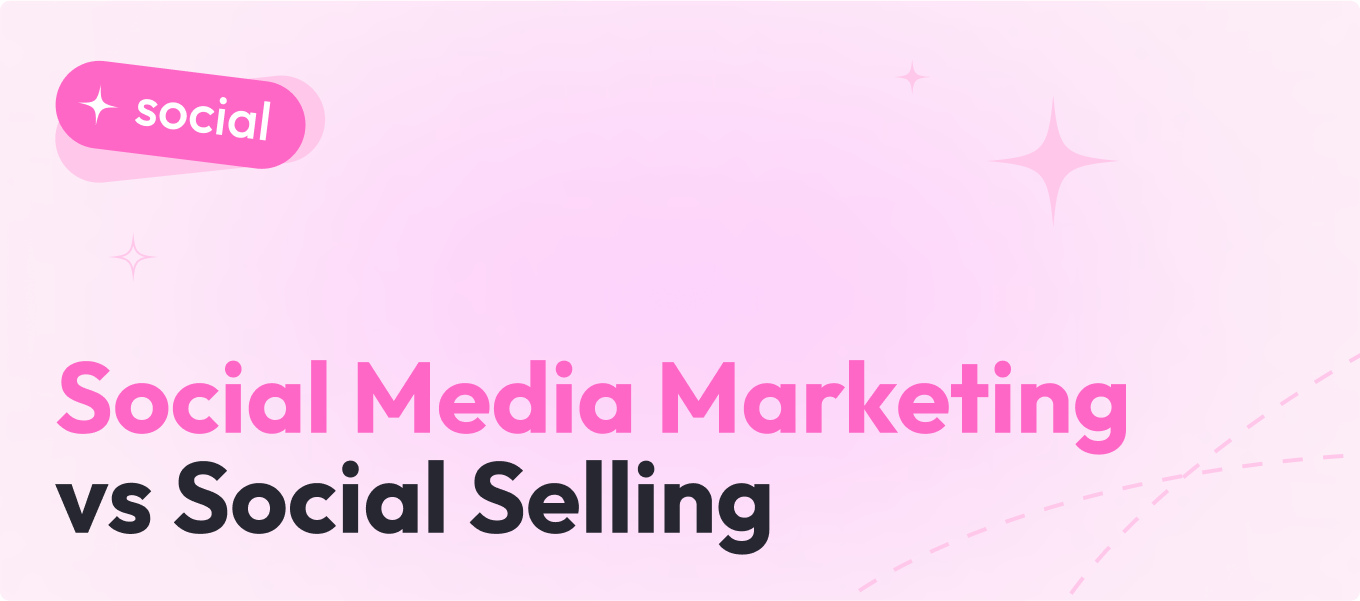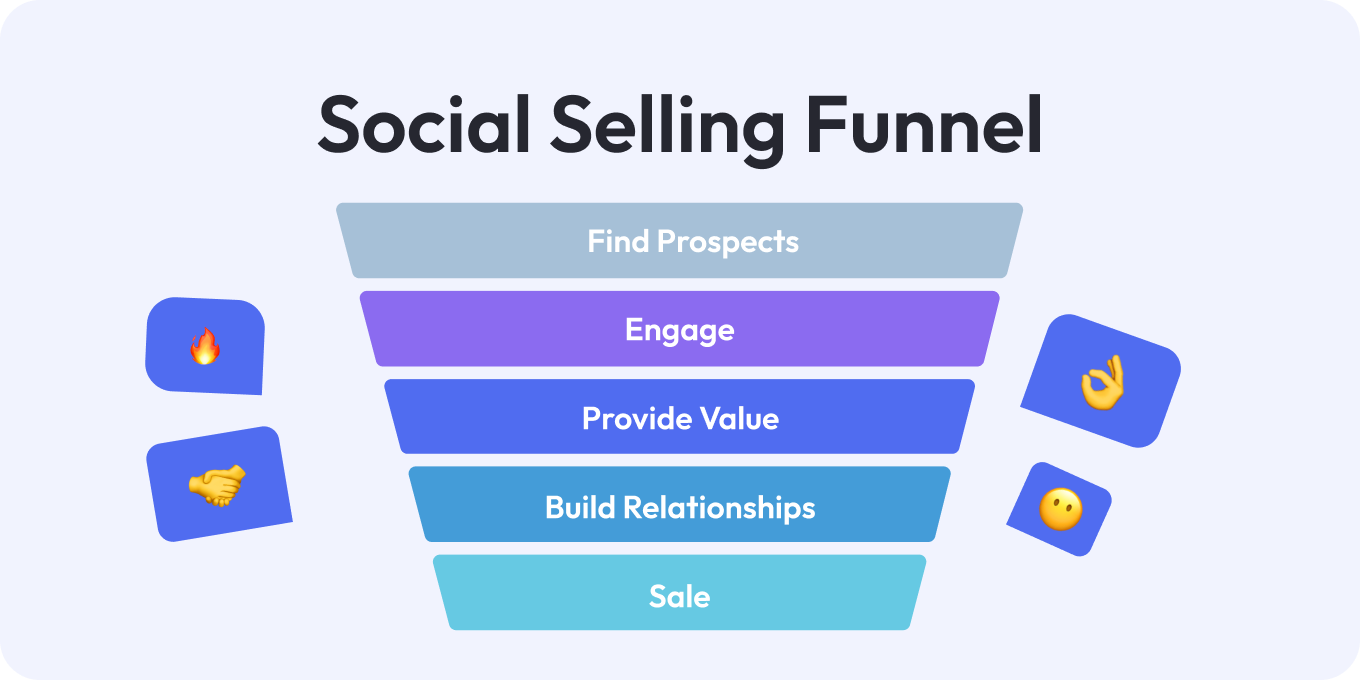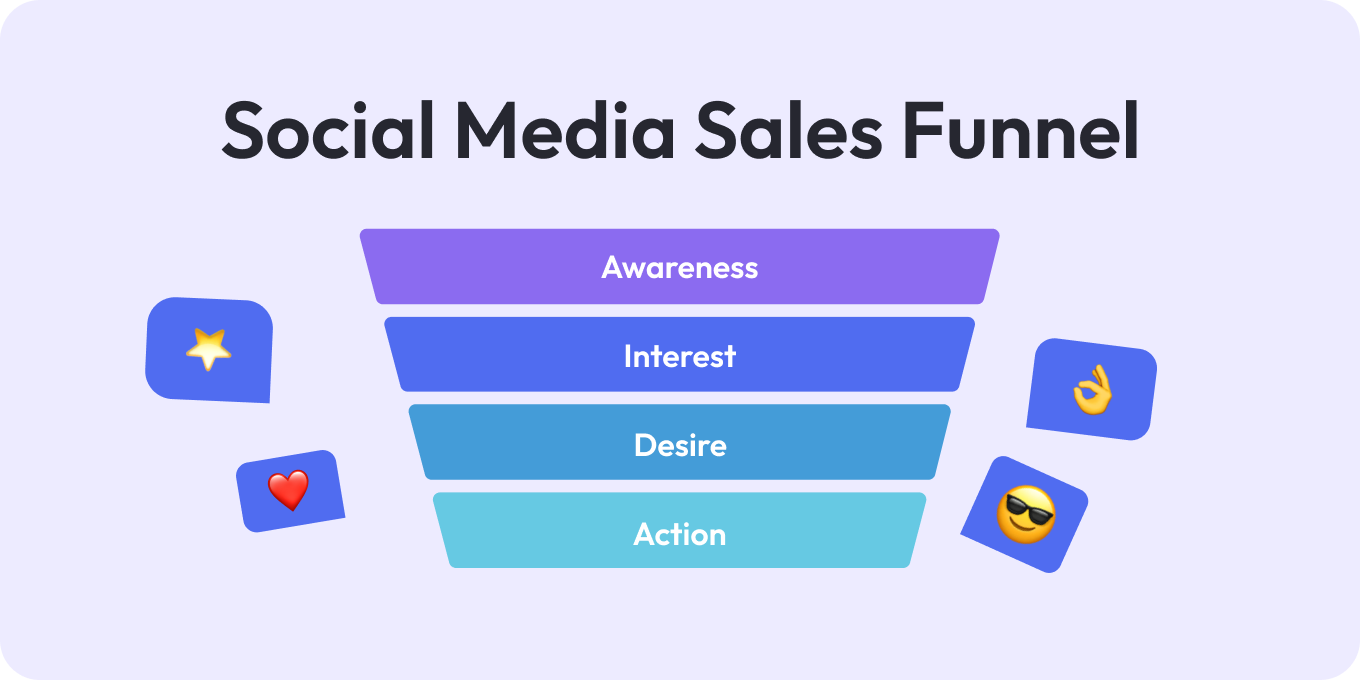- Blog
- /
- Popular articles
- /
- Social Media Marketing vs Social Selling. The difference you want to know about
Table of contents
Social Media Marketing vs Social Selling. The difference you want to know about

- #B2B
- #Customer Success
- #Sales
- 10 min read
- Posted:
Marketing and selling are the essential parts of any business. It is easy to understand that they are different when talking about offline. But when it comes to Social Media Marketing and Social Selling, many people get confused.
To make it clear, Social Media Marketing and Social Selling are not the same things.
For a better understanding let’s consider general terms.
Marketing vs Selling
By definition, Marketing is the complex of activities for creating, communicating, delivering, and exchanging offers that have value for customers, clients, and partners.
Marketing
The main goals of marketing are to raise brand awareness, generate leads, and increase customers’ value. In general, all marketing activities have a goal to drive a client step-by-step to make a purchase.
Marketing can use inbound and outbound approaches, but SMM mostly uses an inbound approach to help customers find your company and get information about it. This approach includes such techniques as content marketing, SEO, PPC.
The method that is used in marketing can be described as a one-to-many. A brand does not make any personal connection with a customer but uses different platforms to address the message to the general audience.
Selling
Selling is a process where a good or service is being exchanged for money. It’s also the final stage of a company’s business сycle and refers to the process of persuading a person or organization to buy something. In contrast to the marketing “push” strategy, selling uses the “pull” strategy.
The main purpose of selling is not just to make customers buy your product or service but to help them understand their needs and provide the best solution to satisfy them. The outbound approach is often used in the selling process, so the salesperson needs to reach the potential customer on his own. In this case, we are talking about one-to-one connections. The salesperson creates a personal connection with a potential customer without any mediators.
So it’s pretty clear that Selling and Marketing are not the same things. We can make a similar conclusion when we are talking about Social Media Marketing and Social Selling. Let’s take a closer look.
Social Media Marketing
Social media marketing is still marketing, but it uses the power of social networks. In SMM, you are using social media platforms to connect with your audience to build your brand, increase sales, and drive website traffic.
Goals can vary from company to company, depends on the product type, but in general, the goals of SMM are:
- Increasing brand awareness;
- Lead generation;
- Customer acquisition;
- Thought leadership;
- Online sales boosting.
The crucial method of Media Marketing is content posting. To stand out from the crowd and reach your potential clients, you should find your tone of voice, create unique content, and also post it at the right time. It is great for your Social Media Marketing to be done on a day-to-day basis. But not only should you provide content regularly, but it is also important to provide value. Your audience is here not just for a good story but to get professional expertise and a good piece of advice.
Of course, we can use SMM for selling purposes by telling customers about our products and persuading them to make a purchase, but we can’t call this process social selling. Now we explain what social selling means.
Social Selling
Social Selling, on the contrary, is not about posting but about listening. Social listening, to be more accurate. Social listening is a practice when the company uses social networks to look at what their potential customers need. Social listening allows you to understand what your customers are talking about, what they think, how they feel, and how they can benefit from your business. Almost half of the marketers all over the world have turned to social listening during the pandemic.
Goals
The main goal of Social Selling is not only to increase sales directly via the internet. The real goal of any sale is to suggest a solution that a customer needs.
With the help of social listening, the salesperson finds a potential client and starts personal communication. Like in offline selling, the main goal of social selling is to help a customer find the best solution for their inquiry.
Main Social Selling methods are:
- Personal branding;
- Social listening;
- Prospects monitoring;
- Direct interaction.
Core differences in Sales between SMM and Social Selling
As you can see, these two methods do differ in definitions, goals, and tactics, but what is more important, they create two different customer experiences and use two different funnels. There are a huge number of funnels, they can vary from company to company, but today we will describe more common ones.
The Social Selling funnel shows the way a salesperson drives prospects to turn him into a customer.

The funnel contains five stages:
- Find & Connect with prospects
- Engage & Build bound
- Provide value & Build trust
- Build relationships
- Go offline for a sales conversation
It’s a more passive way for a buyer, as all stages are initiated by the salesperson.
Social Media Marketing funnel can be described by the AIDA model, as the way prospects by which people become customers.

This funnel contains four stages:
- Awareness;
- Interest;
- Desire;
- Action.
As the prospects go through the funnel, they become aware of your company, then develop an interest in your product or service, form a desire to purchase one of your products or services, and then convert. This way is more active from the prospect’s side.
In general, while the Social Media Marketing funnel builds from the customer’s perspective, the Social Selling one – from the salesperson’s.
In conclusion
To sum up, we have created this short table.
| Social Selling | SMM | |
| Goals | Pull a customer into the selling process | Push customers to the buying process |
| Main approach | outbound | inbound |
| Methods | direct interaction, personal branding, social listening, monitor prospects | content posting commenting, advertising |
| Communication type | one-to-one | one-to-many |
| Perspective | salesperson’s | customer’s |
So there is how Social Media Marketing and Social Seling differ, but more importantly, is that both of these methods are used in the company cycle. And you even can combine them together. For example, you can use your accounts in social networks to make the audience aware of your company, and then not just wait for them to come to you and make a purchase, but use Social Selling techniques to reach them. That is called Selling and Marketing alignment. And the truth is such a tactic can help you increase your revenue. This tactic may help you surpass your competitors and gain profit.
- #B2B
- #Customer Success
- #Sales
- 10 min read
- Posted: